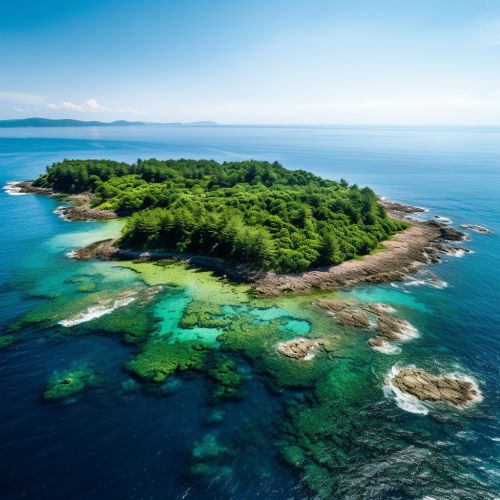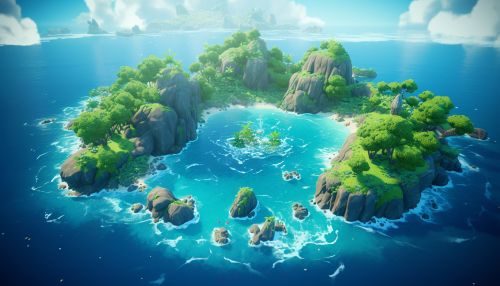Island Biogeography
Introduction
Island biogeography is a field of study that examines the factors that affect the species richness of isolated natural communities. The theory of island biogeography, first proposed by Robert MacArthur and E.O. Wilson in 1967, is a fundamental concept that has greatly influenced the way scientists think about species richness, extinction, and colonization processes.


Concepts and Principles
The theory of island biogeography is based on two main principles: the species-area relationship and the equilibrium model of island biogeography.
Species-Area Relationship
The species-area relationship is a fundamental concept in ecology and biogeography. It states that the number of species found in a habitat increases with the size of the habitat. This relationship is often described by a power function, S = cA^z, where S is the number of species, A is the area, and c and z are constants. This relationship is often used to predict the number of species that would be found in a new habitat or the loss of species due to habitat destruction.
Equilibrium Model of Island Biogeography
The equilibrium model of island biogeography describes the number of species on an island as an equilibrium between immigration and extinction. According to this model, when an island is first formed, the number of species increases rapidly due to immigration. Over time, as the number of species on the island increases, the rate of immigration decreases and the rate of extinction increases, until the two rates balance each other out and the number of species reaches an equilibrium.
Factors Influencing Island Biogeography
Several factors influence the biogeography of an island, including its size, distance from the mainland, and age.
Island Size
Island size is a critical factor in island biogeography. Larger islands can support more species due to greater availability of resources and habitats. Additionally, larger islands have lower extinction rates because they can support larger populations, which are less susceptible to stochastic extinction events.
Island Isolation
The distance of an island from the mainland also plays a significant role in its biogeography. Islands that are closer to the mainland have higher immigration rates because they are easier to reach for dispersing organisms. On the other hand, more isolated islands have lower immigration rates but may harbor unique species that have evolved in isolation.
Island Age
The age of an island can influence its biogeography. Older islands have had more time for species to colonize and evolve, and therefore may have higher species richness. However, older islands may also have higher extinction rates due to longer exposure to stochastic events.
Applications of Island Biogeography
The principles of island biogeography have been applied in various fields, including conservation biology, restoration ecology, and landscape ecology.
Conservation Biology
In conservation biology, the principles of island biogeography are used to guide the design of nature reserves. For example, larger reserves are preferred because they can support more species and have lower extinction rates. Similarly, reserves that are closer to other protected areas are preferred because they have higher immigration rates.
Restoration Ecology
In restoration ecology, the principles of island biogeography can guide the restoration of degraded habitats. For example, larger restoration projects are more likely to succeed because they can support more species and have lower extinction rates. Similarly, restoration projects that are closer to sources of colonizing species are more likely to succeed.
Landscape Ecology
In landscape ecology, the principles of island biogeography are used to understand the effects of habitat fragmentation on biodiversity. Habitat fragments are often treated as "islands" in a "sea" of unsuitable habitat, and the principles of island biogeography can be used to predict the effects of fragmentation on species richness.
